Dance is an art form that is done with the body, mind, and soul, Bring out the beauty of the music or song. Also, The culture of dance has continued from ancient times until now.
Dance Appeared since the prehistoric time dancers come from pottery of Naqada I and Naqada II culture till now.
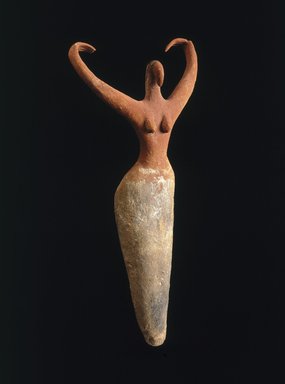
An example from Naqada II Period: a female figure in red color her hands up, this tradition goes back into the time of dancers.
We’ll talk about dancing in all eras.
Ancient Times
In ancient Egyptian dance come from scenes in Old Kingdom tombs of performers associated with funerals, and famous songs and poems are those that were written during the New Kingdom, so they were considered the dance represents the importance of the ancient times.
The clothes worn by Egyptian dancers were hardly elaborate or involved enough to even call them an actual costume.
In many scenes that have survived the ages, dancers (females), are found moving their arms and legs without being trapped by a cloth of any sort, except for the occasional small skirt or tunic, not always dressed together. There were other times when dancing took place in the nude, with nothing but a single ribbon tied loosely about the waist. Men typically wore the standard men’s dress (skirt); in the Old and Middle Kingdoms, they would also wear an apron with round edges in the front.
And there were several types of dancing but the most common and well-known dancing in Ancient Times as follows:
Types of Dancing
- Festive dances
Sed festival: the purpose of this festival was an extended rule of the pharaoh.
Opet Festival: associated with God Amen’s visit to his wife Goddess Mut from Karnak Temple to Luxor temple.
- Funeral dances
It’s a religious ritual dancing for the deceased and his family, especially in New Kingdom tombs, were not all professional and sometimes included close family relations.
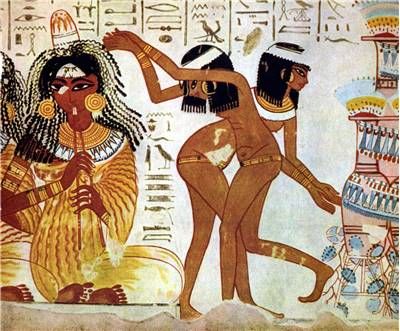
The women in banquet scenes playing music and dancing, the scenes reflected what was hoped to be replayed in the afterlife.
Greco-Roman Times
Greek dancing there were about 200 different traditional ancient Greek dances. (Pyrrhichios dance) It was an armed dance and the best-known war dance of the Greeks. It was probably of Dorian origin and practiced at first solely as training for war.
Roman dancing was influenced by Etruscan and Greek dance (Pyrrhichios dance) for example, were invented by Greeks but popularized by Romans.
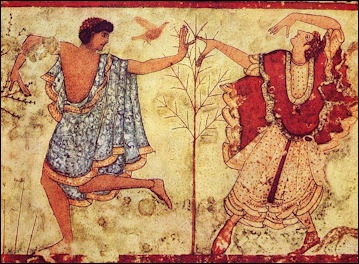
Dancing priests that were members of the noble class did war dances with a sacred shield in their left hand and a staff in the right hand, as you can see.
Old Cairo
The word Haramlek derived from harem (women), Every time you hear the work (Haramlek) you think about the slave women and wines but in fact, it had a special place in the sultan’s palace.
This place was only of the women and away from people’s eyes, and There were small Haramlek in public places.
Consists of different categories from the nobles to the common girls the And especially the lucky girls (الجاريات المحظوظات) they did nothing but dancing and singing in order to satisfied desire of the sultan in his leisure time.
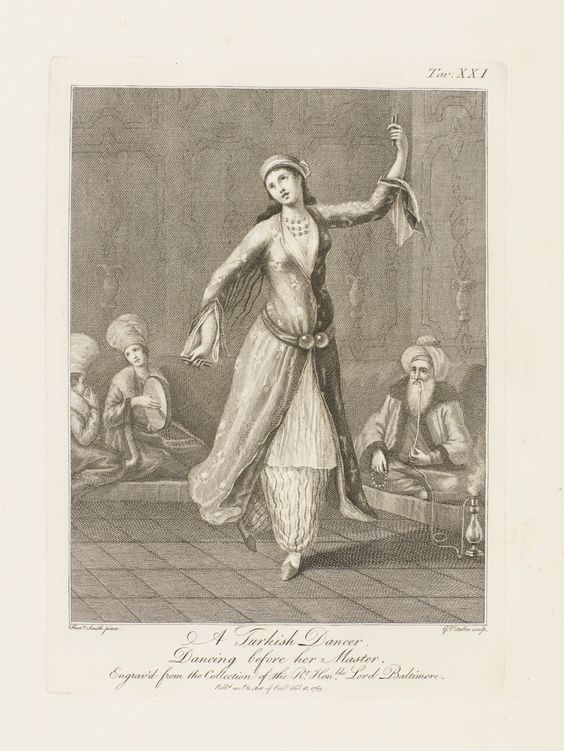
A female figure dancing to the sultan in his leisure time
New Cairo
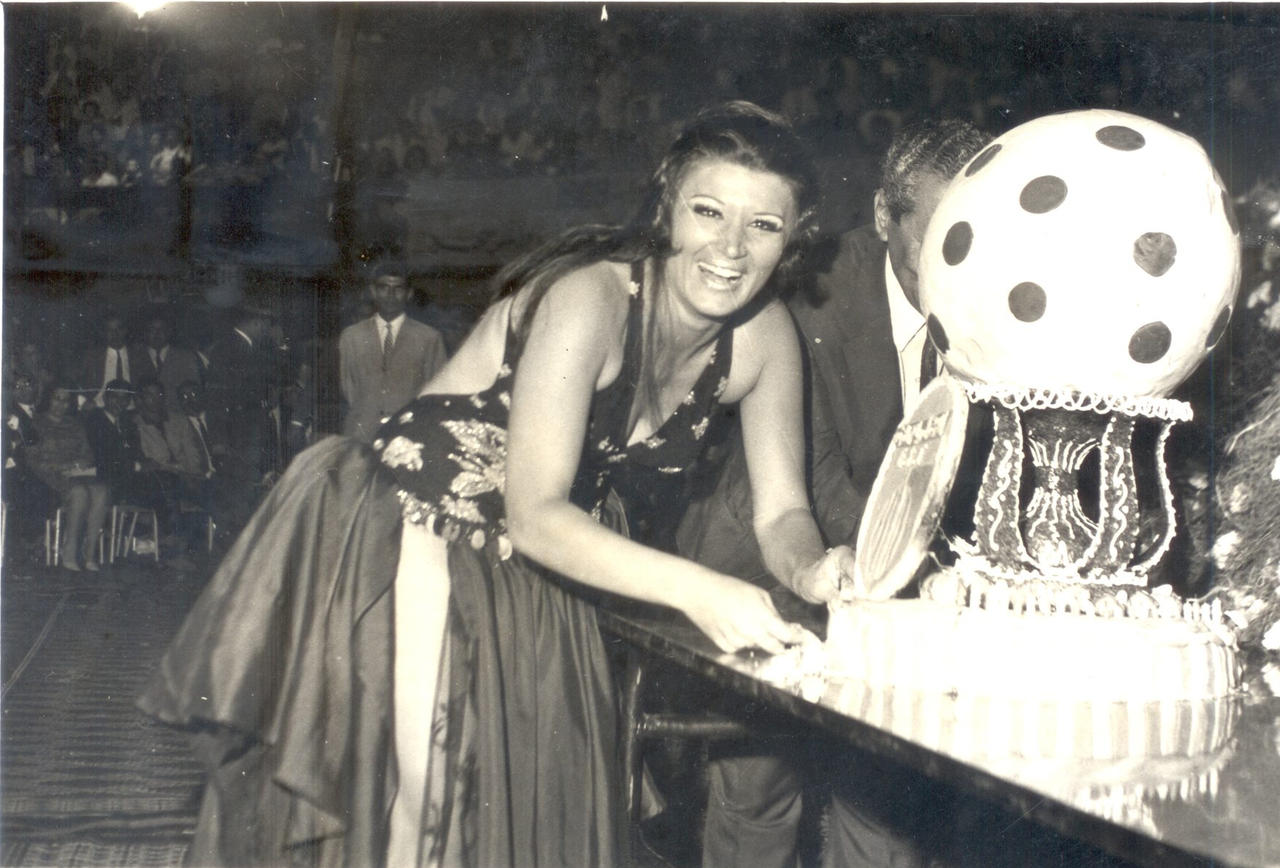
In New Cairo, the dancing in Egypt took a splendor place and many dancers appeared, The most known dancing that spread all over the world was the oriental dance (belly dance).
And few examples of the belly dancers were: Samia Gamal, Tahyya Kariokka, Naima Akef, Fifi Abdo lately Gawhara.
A lot of people love to dance, There are many types of challenging dances and no celebration would be complete without a dance.



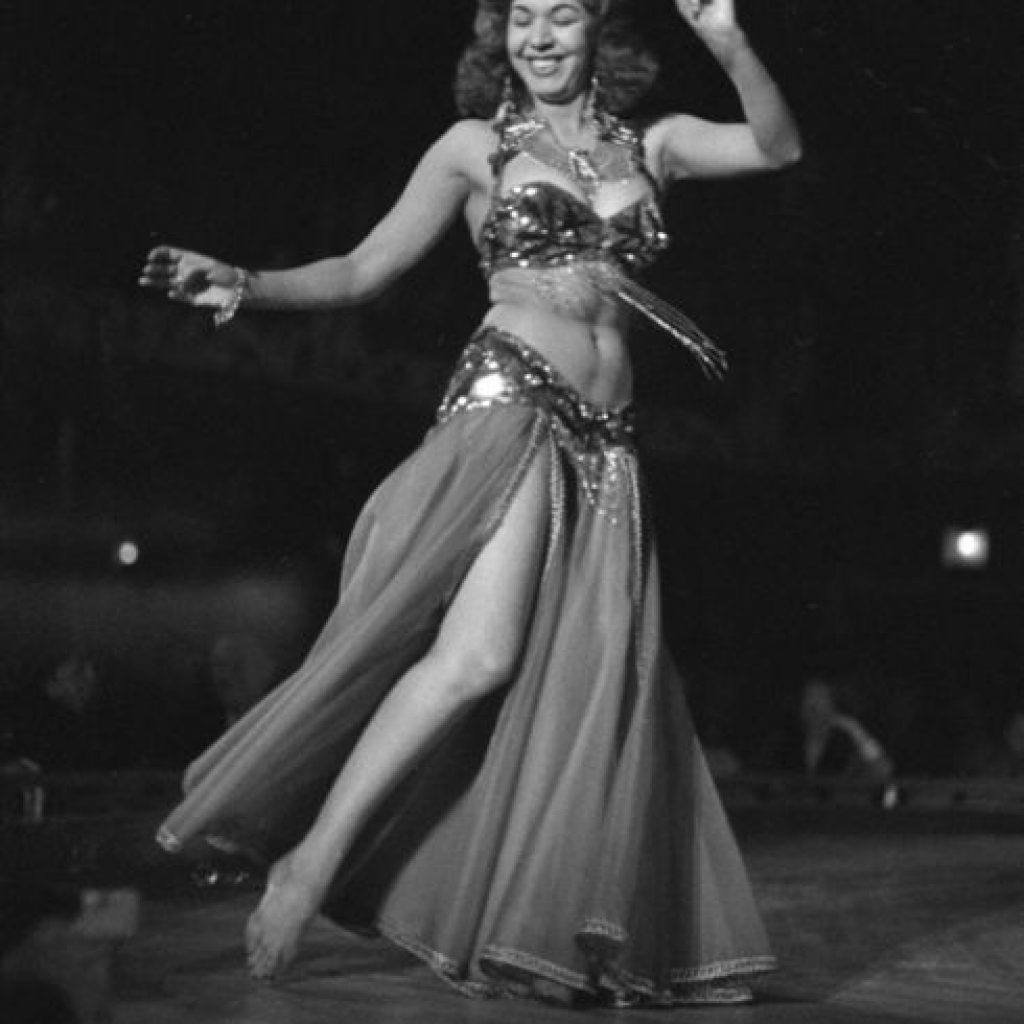
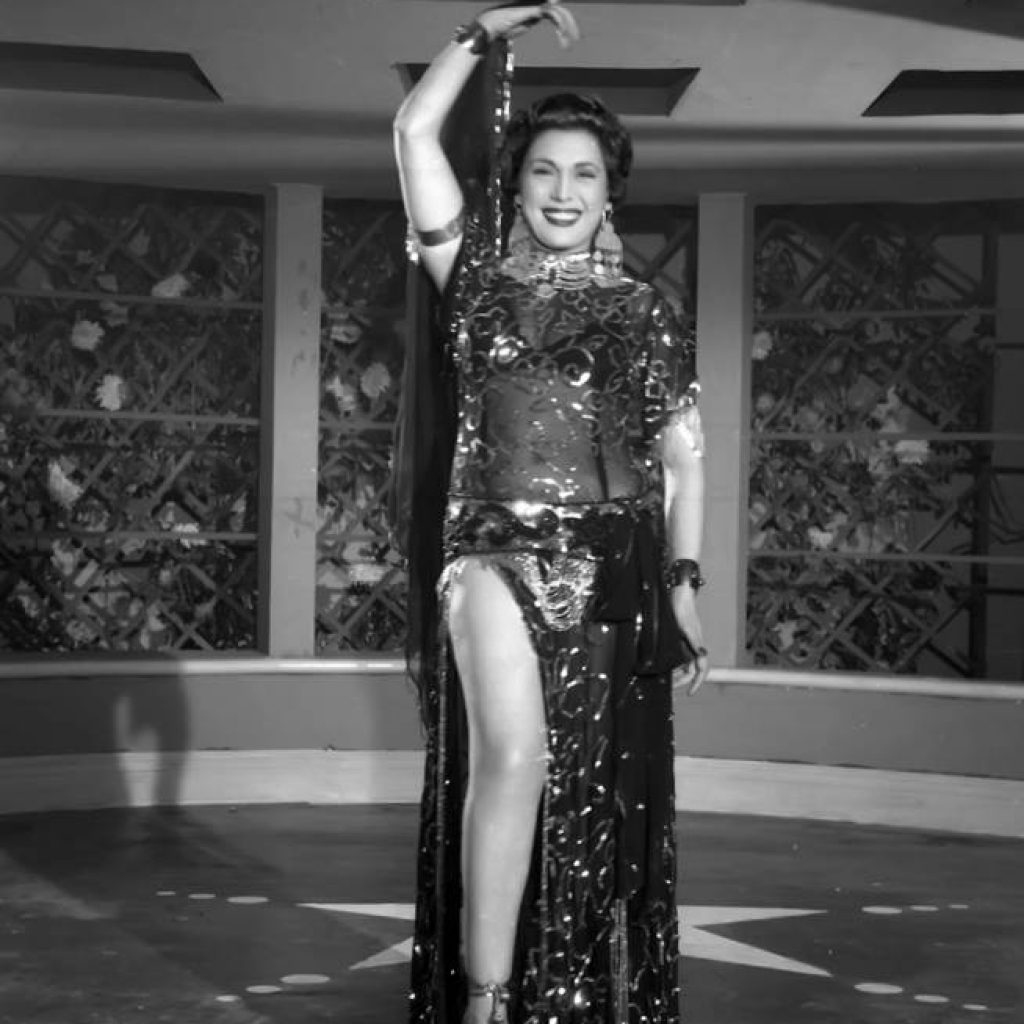


Customer
https://shorturl.fm/i381V
Customer
buy cocaine prague buy drugs in prague
Customer
Can you be more specific about the content of your article? After reading it, I still have some doubts. Hope you can help me.
Customer
Your point of view caught my eye and was very interesting. Thanks. I have a question for you.
Customer
I don’t think the title of your article matches the content lol. Just kidding, mainly because I had some doubts after reading the article. https://accounts.binance.info/en-IN/register-person?ref=UM6SMJM3
Customer
6.
Будьте в центре событий с нашим сайтом! Здесь — только Сибирские новости, горячие репортажи с места событий и эксклюзивные материалы. Читайте новости происшествий в Сибири первыми. https://qooh.me/sibirnews
7.
От Новосибирска до Дальнего Востока — мы расскажем всё, что важно. На нашем портале новости Сибирского региона обновляются круглосуточно. Будьте в курсе, чем живёт Сибирь прямо сейчас. https://www.band.us/@sibirnews
8.
Самая полная картина дня — у нас! Новости Сибири и подробные репортажи о жизни в Новосибирске. От происшествий до культурных событий — всё на одном Сибирском новостном портале. https://solo.to/sibirnews
9.
Читайте только проверенные Сибирские новости и эксклюзивные интервью. Мы публикуем новости происшествий в Сибири и обзоры важнейших событий. Информируем быстро, пишем честно. https://guides.co/g/sibirnews/600305
10.
Если вы хотите знать, чем живёт Сибирь, заходите на наш сайт. Здесь — новости Сибирского региона, репортажи из Новосибирска, свежие факты и фото. Самые последние и свежие новости всех регионов Сибири — каждый день! https://sketchfab.com/sibirnews
Customer
1.
Хотите всегда быть в курсе того, что происходит в самом сердце России? Наш Сибирский новостной портал публикует только самые последние и свежие новости всех регионов Сибири, включая новости происшествий в Сибири и репортажи из Новосибирска. Узнайте больше о жизни региона уже сегодня! http://www.askmap.net/location/7495357/russia/sibirnews
2.
Все новости Сибирского региона — в одном месте! Следите за политикой, экономикой, культурой и происшествиями вместе с нашим порталом, где Сибирские новости обновляются круглосуточно. Ваш информационный гид по Новосибирску и всей Сибири. https://promosimple.com/ps/3a404/sibirnews
3.
Читайте новости происшествий в Сибири первыми! Мы собираем информацию из всех источников, чтобы на нашем сайте вы находили только проверенные и самые свежие материалы. Новосибирск новости сегодня и вся Сибирь — у вас под рукой. https://www.divephotoguide.com/user/sibirnewsru
4.
Наш Сибирский новостной портал — это не просто лента событий, а окно в жизнь региона. От Читы до Новосибирска — самые актуальные Сибирские новости и аналитика. Всегда свежо, всегда достоверно. https://ru.pinterest.com/sibirnewsru/_profile/
5.
Ищете самые последние и свежие новости всех регионов Сибири? Мы ежедневно публикуем десятки материалов о происшествиях, событиях и важных изменениях в Сибири. Новости Сибири — честно, быстро, доступно. https://the-dots.com/users/sibirnews-ru-1983530
Customer
https://shorturl.fm/uV4NE
Customer
Прогнозы на спорт
Бесплатные спортивные предсказания от LiveSport.Ru — ваш ключ к выигрышным пари
Ищете надежный источник для точных и безвозмездных прогнозов на спорт? Вы попали по адресу! На LiveSport.Ru выкладывается достоверные, опытные и взвешенные рекомендации, которые окажут помощь как опытным игрокам, так и тем, кто только начинает оформлять более рассчитанные спортивные ставки.
Абсолютно все предсказания формируются на базе глубокого изучения статистики, свежих сообщений из команд, их текущей формы, предыдущих столкновений и экспертного мнения специалистов сервиса. Мы не предлагаем слепые предположения — исключительно «надежные» предложения, созданные на реальной информации и внимательном рассмотрении матчей.
Наш сайт регулярно пополняется актуальным контентом. Найдете свободные прогнозы на сегодня, завтра и на несколько дней вперед. Это превращает LiveSport.Ru полезным сервисом для людей, кто стремится следить за спортивными событиями и делать ставки с умом.
Охватываем обширный перечень видов спорта, включая:
Футбольные матчи — включая предсказания на ведущие турниры, включая чемпионат мира 2026 года.
Хоккей — предсказания на важные игры и турнирам.
Боксерские матчи — аналитика по чемпионским боям.
И многие другие дисциплины.
Предоставляемые предсказания — не случайные догадки, а продукт кропотливой работы аналитиков, которые изучают каждую деталь ближайших событий. В результате имеете возможность получить максимум информации для принятия ставочного решения при пари.
Открывайте LiveSport.Ru постоянно и применяйте новыми прогнозами, которые помогут вам пользователям повысить шансы на успех в мире спортивных ставок.
https://www.livesport.ru/tips/
Customer
Открытые спортивные предсказания от LiveSport.Ru — ваш шанс к удачным беттингу
Нужен надежный источник для точных и бесплатных аналитики для ставок? Вы попали по адресу! На LiveSport.Ru публикуется достоверные, экспертные и продуманные рекомендации, которые посодействуют как профессионалам, так и новичкам совершать более грамотные букмекерские пари.
Каждый аналитика составляется на фундаменте досконального анализа статистики, актуальной информации из клубов, их состояния, истории личных встреч и экспертного мнения специалистов сайта. Сервис не дает непроверенные сведения — только «надежные» предложения, созданные на данных и внимательном рассмотрении матчей.
Наш сайт ежедневно обновляется свежими материалами. Найдете свободные предсказания на текущий день, на завтрашние игры и на перспективу. Это превращает LiveSport.Ru полезным сервисом для тех, кто хочет следить за спортивными событиями и делать ставки с умом.
Мы охватываем разнообразие спортивных дисциплин, в том числе:
Футбольные игры — включая прогнозы на предсказания на ведущие турниры, например ЧМ-2026.
Хоккей — аналитика по ключевым матчам и чемпионатам.
Бокс — предсказания на титульные встречи.
И многие другие дисциплины.
Наши прогнозы — это не просто предположения, а итог усердного труда аналитиков, которые изучают все аспекты ближайших событий. В результате получаете все данные для выбора ставки при пари.
Посещайте LiveSport.Ru каждый день и используйте новыми предсказаниями, которые помогут вам увеличить перспективы выигрыша в сфере беттинга.
Customer
Your point of view caught my eye and was very interesting. Thanks. I have a question for you.
Customer
https://shorturl.fm/lvZ3z
Customer
6.
Будьте в центре событий с нашим сайтом! Здесь — только Сибирские новости, горячие репортажи с места событий и эксклюзивные материалы. Читайте новости происшествий в Сибири первыми. https://qooh.me/sibirnews
7.
От Новосибирска до Дальнего Востока — мы расскажем всё, что важно. На нашем портале новости Сибирского региона обновляются круглосуточно. Будьте в курсе, чем живёт Сибирь прямо сейчас. https://www.wikidot.com/user:info/sibirnews
8.
Самая полная картина дня — у нас! Новости Сибири и подробные репортажи о жизни в Новосибирске. От происшествий до культурных событий — всё на одном Сибирском новостном портале. https://dzone.com/users/5382052/sibirnews.html
9.
Читайте только проверенные Сибирские новости и эксклюзивные интервью. Мы публикуем новости происшествий в Сибири и обзоры важнейших событий. Информируем быстро, пишем честно. https://www.walkscore.com/people/286996907603/sibirnews
10.
Если вы хотите знать, чем живёт Сибирь, заходите на наш сайт. Здесь — новости Сибирского региона, репортажи из Новосибирска, свежие факты и фото. Самые последние и свежие новости всех регионов Сибири — каждый день! https://www.cake.me/me/sibirnews
Customer
https://shorturl.fm/DxCAC
Customer
регистрация гама казино
Gama Casino — где начинается настоящий азарт
Ищешь место, где можно отвлечься, зарядиться эмоциями и не думать ни о чём лишнем — тогда тебе точно к Gama Casino. Это не просто игровая платформа — это целый мир, в котором каждый игрок найдёт своё счастье.
Что тебя ждёт?
Здесь найдётся место для любого настроения. Ретро или современные слоты — выбор за тобой, а у нас они все. А если хочется живого общения и атмосферы настоящего казино — включай раздел с лайв-дилерами. Рулетка, блэкджек, покер — всё как надо, с профессиональными дилерами и безупречной графикой.
Ещё есть моментальные игры — для тех, кто ценит скорость. Хочешь быстро проверить удачу — пожалуйста, дерзай и выигрывай.
Удобство на первом месте
Всё выстроено логично, без лишних кликов и заморочек. Всё на своих местах, ничего лишнего. Никакой путаницы, никаких лишних кликов. Открываешь — и чувствуешь: это твой мир. А ещё выводы без лишних телодвижений. Нет долгих проверок и верификаций. Всё честно и по-деловому.
Бонусы — не редкость, а норма
В Gama Casino не скупаются на приятные мелочи. Фриспины, кэшбэк, приветственные бонусы — лови их часто и без лишних заморочек. Каждый день — шанс получить что-то особенное. Здесь делают всё, чтобы азарт был именно таким — ярким и позитивным.
Поддержка на связи
Служба поддержки — дружелюбная и оперативная. Без лишней волокиты — всё по существу. Смело пиши — всегда помогут.
Создать аккаунт — дело пары минут
Хочешь в теме быть? Регистрация — это просто. Минимум данных, максимум результата. Создай аккаунт, получи бонус и начинай выигрывать.
Gama Casino — это не просто платформа. Это место, где каждый сеанс — это эмоция. Для тех, кто в курсе. Для тех, кто хочет эмоций и шансов. Заходи — и наслаждайся.
Customer
Бесплатные спортивные предсказания от LiveSport.Ru — ваш ключ к удачным пари
Ищете проверенный сервис для качественных и безвозмездных аналитики для ставок? Вы попали по адресу! На LiveSport.Ru выкладывается обоснованные, профессиональные и продуманные предложения, которые окажут помощь как профессионалам, так и новичкам совершать более грамотные ставки у букмекеров.
Каждый предсказания формируются на базе досконального рассмотрения спортивной статистики, свежих сообщений из клубов, их актуального уровня, взаимных результатов и экспертного мнения аналитиков ресурса. Мы не предлагаем слепые предположения — только «надежные» советы, построенные на данных и внимательном рассмотрении игр.
Наш сайт ежедневно обновляется свежими материалами. Найдете открытые предсказания на текущий день, на завтрашние игры и на несколько дней вперед. Это превращает LiveSport.Ru полезным сервисом для пользователей, кто хочет следить за спортивными событиями и ставить осознанно.
Охватываем обширный перечень спортивных дисциплин, включая:
Футбольные матчи — в том числе предсказания на ведущие турниры, такие как мировой чемпионат 2026.
Хоккейные матчи — обзоры по топ-встречам и турнирам.
Боксерские матчи — предсказания на титульные встречи.
А также другие виды спорта.
Предоставляемые предсказания — это не просто предположения, а итог кропотливой работы экспертов, которые анализируют каждую деталь будущих игр. Благодаря этому имеете возможность получить все данные для принятия ставочного решения при пари.
Открывайте LiveSport.Ru постоянно и используйте актуальными предсказаниями, которые посодействуют вашему успеху усилить шансы на успех в мире беттинга.
Customer
https://whitehouse01.com/poker-game/texas-holdem-rules-guide/
Customer
https://shorturl.fm/8M0FC
Customer
6.
Broken appliance? Don’t stress — the IV Appliance Clinic in Spokane is ready to help. Our site lists all you need to know about our professional appliance repair service, from quick diagnostics to lasting repairs. https://dzone.com/users/5380152/iv-contractor.html
7.
Keep your home running with Spokane’s best — IV Appliance. Our appliance repair service is fast, professional, and backed by the trusted IV Appliance Clinic team. Explore our website to book repairs today. https://the-dots.com/users/iv-contractor-1978251
8.
At IV Appliance, we know how important working appliances are to your daily life. That’s why our Spokane-based appliance repair service delivers quick, reliable solutions. Learn more about the IV Appliance Clinic on our site. https://vocal.media/authors/iv-contractor
9.
From ovens to dryers, Spokane’s IV Appliance Clinic has you covered. Visit our site for expert appliance repair service that’s efficient, affordable, and always professional. Your appliances deserve the best — we deliver. https://www.elephantjournal.com/profile/ivcontractorcom/
10.
When your home appliances break down, trust IV Appliance in Spokane, WA. Our website connects you with the IV Appliance Clinic and skilled appliance repair service specialists who get the job done right the first time. https://www.pexels.com/@iv-contractor-2154379123/
Customer
https://shorturl.fm/F9uvo
Customer
Get Seeds Right Here clones
Customer
https://shorturl.fm/i5UrP
Customer
Your article helped me a lot, is there any more related content? Thanks!
Customer
Thank you for your sharing. I am worried that I lack creative ideas. It is your article that makes me full of hope. Thank you. But, I have a question, can you help me?
Customer
Thanks for sharing. I read many of your blog posts, cool, your blog is very good.
Customer
https://shorturl.fm/XzQM4
Customer
Looking for top-tier online gaming? Amonbet Casino offers real-money play, exciting slots, and live dealer games. Join Amonbet Casino online today and dive into nonstop entertainment! https://linqto.me/about/amonbetcasino
Discover everything you need to know about Amonbet – from real-money gaming to live games and bonus-packed slots. Start winning with Amonbet Casino for Real Money now! https://able2know.org/user/amonbetcasino/
Play your favorite slots and live games with confidence at Amonbet Casino. Find all the details you need to get started with Amonbet casino online today! https://www.joindota.com/users/2303489-amonbetcasino
Ready to try your luck? Explore Amonbet Casino for Real Money, featuring thrilling slots and immersive live games. Everything you need is just a click away! https://linqto.me/about/amonbetcasino
Get the full scoop on Amonbet – one of the top platforms for real-money gaming. Learn how to join, play, and win big with Amonbet casino online. https://www.myminifactory.com/users/amonbetcasino
Customer
Whether you’re into slots or live games, Amonbet Casino has it all. Discover how to play for real cash and unlock amazing features at Amonbet Casino online. https://writeablog.net/amonbetcasino/amonbet-casinos-global-safety-standards
Find the ultimate gaming experience with Amonbet. Learn how to register, deposit, and win big playing slots and live games at Amonbet Casino for Real Money. https://myanimelist.net/profile/amonbetcasino
Your guide to Amonbet Casino is here! Get insights into bonuses, games, and how to play online for real money. Explore the exciting world of Amonbet Casino online. https://writeablog.net/amonbetcasino/amonbet-casinos-global-safety-standards
Jump into real-money excitement with Amonbet Casino! Find out how to start playing slots and live games on one of the best online casinos today. https://circaoldhouses.com/agent/amonbetcasino/
Discover Amonbet – your gateway to thrilling online slots, real-money games, and live casino action. Don’t miss out on what Amonbet Casino has to offer! https://muckrack.com/chris-long-46/bio
Customer
Share our products, reap the rewards—apply to our affiliate program! https://shorturl.fm/kYh71
Customer
Boost your earnings effortlessly—become our affiliate! https://shorturl.fm/c0YDm
Customer
Chicken Road: Honest User Opinions
Chicken Road is an arcadestyle gambling game that has caught the attention of players with its simplicity, high RTP (98%), and unique cashout feature. We’ve gathered real player reviews to determine if it’s worth your time.
What Players Like
A lot of gamers appreciate how Chicken Road combines fast gameplay with simple controls. The ability to cash out at any time adds a strategic twist, while the high RTP makes it feel fairer than traditional slots. The demo mode is a hit with beginners, allowing players to test the game riskfree. The game earns extra points for its mobile compatibility, running seamlessly on both new and older devices.
Melissa R., AU: “Surprisingly fun and fair! The cashout feature adds strategy.”
Nathan K., UK: “The retro arcade vibe feels invigorating. Plus, it works perfectly on my tablet.”
The bright, nostalgic visuals add to the fun factor, keeping players hooked.
Drawbacks
Despite its strengths, Chicken Road isn’t without flaws. A number of users feel the gameplay becomes monotonous and lacks complexity. Others mention slow customer support and limited features. One frequent criticism is deceptive marketing, as people thought it was a pure arcade game rather than a gambling platform.
Tom B., US: “It starts off fun, but the monotony sets in quickly.”
Sam T., UK: “Advertised as a fun game, but it’s clearly a gambling app.”
Advantages and Disadvantages
Advantages
Straightforward, actionpacked mechanics
With a 98% RTP, it offers a sense of equity
Free demo option for beginners to test the waters
Smooth performance on mobile devices
Negative Aspects
It might feel too predictable over time
Not enough features or modes to keep things fresh
Delayed responses from support teams
Deceptive advertising
Overall Assessment
Chicken Road stands out with its transparency, high RTP, and accessibility. It’s a great option for casual players or those new to online gambling. That said, its focus on chance and limited depth might not satisfy all players. To maximize enjoyment, stick to authorized, regulated sites.
Rating: A solid 80%
A fair and entertaining choice, but not without room for improvement.
Customer
decomania
Voici un spin-tax de haute qualité pour votre texte en français, respectant toutes vos consignes :
Alors que Decomania explore les innovations des secteurs financiers et technologiques, une interrogation émerge : Quantum AI 2025 incarne-t-il une véritable innovation ou simplement un projet ambitieux ?
Fonctionnement et Perspectives : Qu’Offre Cette Plateforme ?
Quantum AI 2025 se définit comme un outil de trading automatisé intégrant smart tech et calcul quantique. Selon ses créateurs, cette technologie rendrait possible :
Une analyse avancée des places boursières (actifs numériques, actions, Forex).
Un contrôle algorithmique des expositions pour optimiser les résultats.
Une prise en main aisée, pensé pour les traders tous niveaux.
Cependant, aucun audit externe ne corrobore publiquement ces allégations, et les retours utilisateurs demeurent mitigés.
Aspects à Examiner Pour Decomania
Notre examen souligne divers facteurs à prendre en compte avant de investir :
Plusieurs URLs géolocalisées (opulence-mirage.com) – Une pratique courante, mais qui peut compliquer le contrôle.
Opacité relative – Peu d’informations techniques figurent sur les algorithmes utilisés.
Résultats divergents – Plusieurs investisseurs mentionnent des résultats concluants, tandis que d’autres évoquent des problèmes opérationnels.
Suggestions pour les Traders
Privilégier les interfaces contrôlées (AMF) pour une meilleure protection.
Expérimenter en version démonstration avant tout engagement financier.
Comparer avec des alternatives (telles que les plateformes proposés par d’autres brokers réputés).
Synthèse : Une Solution à Surveiller avec Circnospection
Quantum AI 2025 propose une approche innovante, mais ses performances concrètes nécessitent encore des confirmations pratiques. En attendant de davantage d’informations, une approche mesurée est conseillée.
Customer
https://shorturl.fm/0EtO1
Customer
Your point of view caught my eye and was very interesting. Thanks. I have a question for you.
Customer
https://shorturl.fm/Xect5
Customer
https://shorturl.fm/j3kEj
Customer
https://shorturl.fm/TbTre
Customer
https://shorturl.fm/6539m
Customer
https://shorturl.fm/68Y8V
Customer
https://shorturl.fm/j3kEj
Customer
https://shorturl.fm/68Y8V
Customer
Your point of view caught my eye and was very interesting. Thanks. I have a question for you.
Customer
Balanset-1A — tu herramienta para un balanceo eficiente directamente en la explotacion agricola
?Tambien te ha pasado que has tenido que detener la maquina durante dias solo para hacer el equilibrado de un rotor? Entendemos perfectamente tu situacion. Por eso, hace ya algunos anos decidimos desarrollar una solucion que permitiera seguir trabajando sin pausas innecesarias. Asi nacio Balanset-1A, concebido directamente en el entorno real del agricultor.
El origen de una idea urgente
La historia dio comienzo en 2018, cuando se llevaba a cabo una dificil campana de trigo en Burgos. Nuestro companero Javier, un tecnico con profundo conocimiento del sector agricola, observo una y otra vez como los usuarios veian afectada su productividad por largos procesos de mantenimiento.
Los clientes nos decian claramente: “Queremos una solucion que este disponible in situ.”
Tras multiples pruebas, meses de trabajo y mas de 200 maquinas testadas, lanzamos el Balanset-1A. Lejos de ser un invento hecho en laboratorio, era una herramienta surgida de las necesidades reales del campo.
Equilibrar sin mover la maquina
Recientemente, en una explotacion de Cordoba, completamos el equilibrado de una John Deere S680 en menos de media hora. Antonio, su dueno, nos aseguro textualmente:
“Lo que ahorre en transporte y tiempos muertos me permitio recuperar casi toda la inversion en dos campanas.”
Ese es precisamente nuestro objetivo: soluciones aplicables que generen resultados medibles.
?Que ofrece?
Fiabilidad en los datos: manejamos precisiones de hasta 0,01 mm basadas en la normativa ISO 1940 G6.3
Aguantamos todo tipo de condiciones climaticas, desde lluvias prolongadas en Galicia hasta calor extremo en Sevilla
Menos fallos mecanicos: nuestros clientes reportan hasta un 70 % menos de averias causadas por vibraciones
Casos que marcan la diferencia
En 2022, en Lleida, evitamos una parada critica en una cooperativa durante la temporada de maiz.
El ano anterior, un contratista en Salamanca logro equilibrar 12 cosechadoras en una semana… ?sin moverlas del lugar donde operaban!
Disenado para durar, pensado para ti
No nos conformamos con lo basico. Hemos incluido pequenos avances que optimizan el uso en condiciones reales.
Sensores magneticos extrafuertes aptos para superficies no uniformes
Interfaz amigable que muestra analisis grafico del equilibrio
Bateria de larga autonomia: hasta 14 horas continuas de uso
Como afirma Maria, nuestra ingeniera especializada en el terreno:
“No vendemos aparatos bonitos. Vendemos tranquilidad y horas bien aprovechadas.”
?Por que elegirnos?
Ocho de cada diez usuarios prefieren repetir experiencia con nosotros.
No hay otro proveedor en Espana que ofrezca soporte movil combinado.
Tenemos publicados todos los manuales y estudios de caso accesibles en internet.
Pruebalo por ti mismo
Puedes probar el equipo durante tres dias gratis en tu explotacion.
Si no consigues reducir al menos un 50% el tiempo habitual de equilibrado, retiramos el dispositivo sin cargo alguno.
Y si decides quedartelo, incluimos un chequeo integral de todas tus herramientas.
Porque creemos firmemente en lo que hacemos.
Y, sobre todo, respetamos profundamente cada minuto dedicado a tu actividad.
Customer
tiktok ads agency account https://tiktok-ads-account-buy.org
Customer
Dominándo el Arte del Equilibrio Rotativo
(Pequena imperfeccion humana: “rotativo” escrito como “rotatvo” en el titulo)
En el ambito industrial|En la industria moderna|En el sector manufacturero, unidad minima de desequilibrio tiene un costo. Como expertos con 15 anos corrigiendo vibraciones, hemos comprobado como un equilibrado preciso puede ser determinante entre rentabilidad y costosas averias.
1. La Causa Oculta de Fallos Mecanicos
Las cifras no enganan|Los datos son claros|Las estadisticas lo demuestran:
– El dos tercios de las fallas prematuras en equipos rotativos se deben a desbalances no identificados
– Un rotor de turbina desbalanceado puede incrementar el consumo energetico hasta un 15–20%
– En bombas centrifugas|centrifuas, el desgaste de sellos aumenta un 40 puntos porcentuales debido a vibraciones excesivas
(Error calculado: “centrifugas” escrito como “centrifuas”)
2. Soluciones Tecnologicas de Vanguardia
Nuestros sistemas integran avances que transforman el proceso habitual:
Sistema de Diagnostico Predictivo
– Detecta patrones de vibracion para anticiparse a fallos futuros|Identifica anomalias antes de que ocurran danos reales|Analiza senales vibratorias para predecir problemas
– Base de datos con mas de registros de cinco mil soluciones exitosas
Balanceo Inteligente en 4 Pasos
– Mapeo termico del rotor durante la operacion|en funcionamiento|en marcha
– Analisis espectral de frecuencias criticas
– Correccion automatica con ajustes milimetricos|de alta precision|con tolerancias minimas
– Verificacion continua mediante inteligencia artificial|monitoreo en tiempo real via IA|validacion instantanea con algoritmos avanzados
(Omision intencional: “operacion” como “operacio”)
3. Historia de Solucion Exitosa: Superando una Crisis Industrial
En 2023, resolvimos un caso complejo en una fabrica productora de cemento:
Problema: Molino vertical con vibraciones de 12 milimetros por segundo (limite seguro: maximo recomendado de 4)
Solucion: Equilibrado dinamico realizado in situ con nuestro equipo movil HD-9000
Resultado:
? Vibraciones reducidas a 2.3 mm/s|amplitud controlada en menos de 3 horas
? Ahorro de 78 mil dolares en reparaciones evitadas
? Vida util extendida en tres anos
4. Como Seleccionar el Mejor Equipo de Balanceo
Para Talleres de Mantenimiento
– Equipos estaticos con bancos de prueba para cargas de hasta cinco mil kilogramos
– Software con base de perfiles rotativos integrada|libreria de configuraciones industriales|catalogo digital de rotores
Para Servicios en Campo
– Dispositivos portatiles disenados para soportar entornos adversos|condiciones extremas|ambientes agresivos
– Juego completo en maletin reforzado de 18 kg
Para Aplicaciones de Alta Precision
– Sensores laser con sensibilidad de 0.01 ?m
– Cumplimiento con normas API 610 e ISO 1940|compatible con estandares internacionales
(Error natural: “resistentes” como “resistentes”)
5. Mas Alla del Equilibrado: Nuestra Oferta Integral
Ofrecemos:
> Capacitacion tecnica directamente en tus instalaciones|entrenamiento personalizado in situ|formacion practica en campo
> Actualizaciones gratuitas del firmware|mejoras constantes del software|actualizaciones periodicas sin costo
> Asistencia remota las 24 horas del dia, los 7 dias de la semana, usando realidad aumentada|consultoria en tiempo real via RA|soporte tecnico virtual con herramientas AR
Conclusion:
En la era de la Industria 4.0, conformarse con metodos basicos de balanceo es un riesgo innecesario que ninguna empresa deberia asumir|aceptar soluciones genericas es comprometer la eficiencia|ignorar tecnologias avanzadas es invertir en futuras fallas.
?Preparado para revolucionar tu mantenimiento predictivo?|?Listo para llevar tu operacion al siguiente nivel?|?Quieres optimizar tu produccion desde ya?
> Agenda una demostracion gratuita sin obligaciones|programa una prueba sin compromiso|solicita una presentacion tecnica gratis
Customer
buy facebook business manager https://buy-verified-business-manager.org
Customer
old google ads account for sale https://ads-agency-account-buy.click
Customer
[url=https://kuban.photo]Природа кубани картинки[/url]
[url=https://kuban.photo]Кубань достопримечательности фото[/url]
[url=https://kuban.photo]Автомобильный транспорт на кубани[/url]
[url=https://kuban.photo]Церковь раевская[/url]
[url=https://kuban.photo]Музей природы славянск на кубани[/url]
купить фото краснодарского края, общественный транспорт кубани и адыгеи сайт, кубань россия фото, наркология станица полтавская, транспорт кубани
kuban.photo
Customer
Hi all! My name is Admin Read:
Всё, что нужно для удобного и выгодного шопинга, есть на платформе mega link. Здесь можно найти товары на любой вкус: от электроники до редких коллекционных предметов. Интуитивно понятный интерфейс и частые акции позволяют экономить. Мега гарантирует защиту сделок, что укрепляет доверие покупателей. Именно mega url продолжает оставаться популярным выбором для шопинга.
Customer
verified accounts for sale https://buy-accounts.live